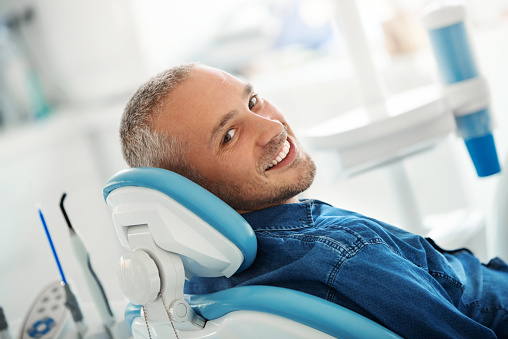Regeneration With advanced periodontitis, you are likely to experience loss of both gum and bone tissue. When this happens, you experience changes in facial structure and possible difficulty in everyday activities. This also makes oral hygiene more difficult, meaning you are at risk of even more infection in the future. At Glen Perio, we have several methods of tissue regeneration for both gum and both tissues. In addition, we often combine these procedures with bone grafts. With advanced periodontitis, you are likely to experience loss of both gum and bone tissue. When this happens, you experience changes in facial structure and possible difficulty in everyday activities. This also makes oral hygiene more difficult, meaning you are at risk of even more infection in the future. At Glen Perio, we have several methods of tissue regeneration for both gum and both tissues. In addition, we often combine these procedures with bone grafts.Guided Tissue Regeneration (GTR)When your teeth or any bone tissue is damaged, your body will try to fill in the space with new tissue. However, soft tissue is generally what forms because the cells populate faster. Unfortunately, this leads to permanent bone loss. Guided tissue regeneration provides a way to regenerate bone tissue and prevent soft tissue from filling in the space. This surgical procedure begins with our periodontist opening the gums, a procedure called flap surgery, and clearing any bacteria from the area. Once this preparation is complete, we will place a biocompatible membrane over the area where bone tissue is needed. This is a mesh material that covers the open space. The membrane and stitches may be able to dissolve on their own or we can remove them once the process is complete. Full tissue regeneration can take up to six months. Bone RegenerationThere are two different types of bone regeneration procedures we can do: socket bone regeneration and guided bone regeneration (GBR). Socket bone regeneration uses L-RPF (leukocyte platelet-rich fibrin), which is a substance made with a sample of your own blood to ensure that it is compatible. This substance contains platelets that stimulate the production of new bone tissue in the socket. Guided bone regeneration involves bone tissue that comes from either you or a human or animal donor. Particles from this sample are mixed with antibiotic medication and placed into the space where you are missing bone. We place a membrane over this area to prevent soft tissue from forming in place of new bone tissue. These bone particles, over the course of five to nine months, will transform into natural bone. Sometimes, this is used in combination with dental implants to allow the implants to fuse as these particles heal. Bone GraftsThese procedures are often performed in combination with bone grafts, which are synthetic or natural replacement of the bone. Regenerative procedures help the bone grafts fuse with your natural bone. There are several types of bone grafts that we have available. Autografts are the most invasive type of procedure since it requires two surgery sites. This is a bone graft taken from another area of your body, such as the hip. Allografts are taken from a human donor, most often someone who is deceased and opted to donate their bone tissue. Xenografts come from animal sources. Alloplasts are a synthetic bone graft material that contains phosphorus, calcium, and hydroxylapatite. Of course, there are advantages and disadvantages of each type, which we can explain to you during your consultation. Call Glen Perio at 224-488-3392 to ask about our various regenerative and bone grafting techniques. |